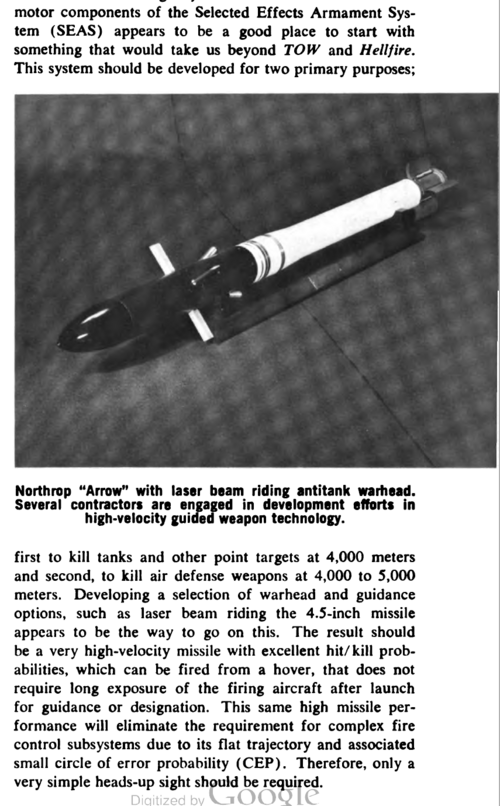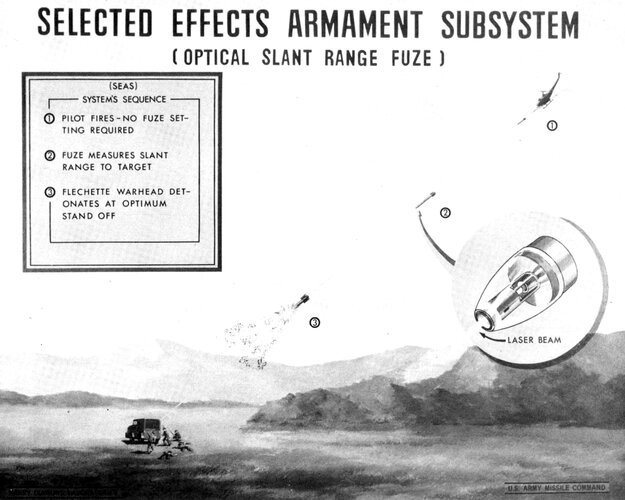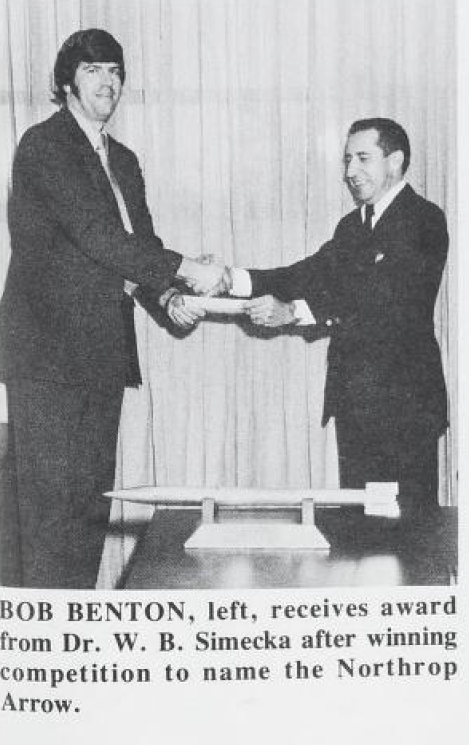- Joined
- 27 December 2005
- Messages
- 16,456
- Reaction score
- 19,163
Northrop "Arrow" SEAS (Selected Effects Armament Subsystem)
1970 - 1975 era program to develop a smart replacement for 2.75 inch unguided rockets. Laser beam riding, with multiple fusing options and warhead types.
I found it in a Northrop News story but can't find that page again at present.



Sources:
Department of Defense Appropriations for 1970 (Google Books)
Armor Magazine July/August 1975 (Google Books)
Wikimedia
Army Aviation Digest (Google Books)
1970 - 1975 era program to develop a smart replacement for 2.75 inch unguided rockets. Laser beam riding, with multiple fusing options and warhead types.
I found it in a Northrop News story but can't find that page again at present.



Sources:
Department of Defense Appropriations for 1970 (Google Books)
Armor Magazine July/August 1975 (Google Books)
Wikimedia
Army Aviation Digest (Google Books)
Last edited:



